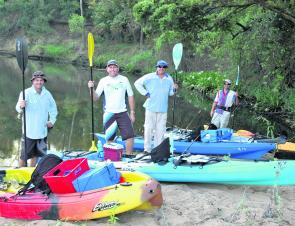What an amazing wet season the eastern side of Australia has been experiencing.
While the rain can be an inconvenience now it will reap be massive benefits for our ecosystem that will last for years. These big wet events are a natural occurrence and despite breaking our long standing records, historically these events are not unprecedented. These massive amounts of water have travelled far and wide across our countryside in the past and they will do again.
Such a huge volume of water is a trigger for some of our native fish to spawn and move making sure they can spread their gene pool across the land. On the coastal strip the fresh running through our rivers and creeks will be carrying all sorts of nutrients down with it. Microorganisms will feed on these nutrients, which will then attract predators all along the food chain.
The wet also provides the passage of different species to travel between the fresh and salt, which repopulates all the water holes and creeks along the coast.
When the dust settles there will be so many more options for the keen angler with a sense of adventure. The most obvious being the mighty Burnett River, Bundaberg’s major watercourse. I have long reported on the fishing in the Burnett’s saltwater, now over the next few years its freshwater will also start to shine.
The Burnett River has been stocked with hundreds of thousands of fish in its upper reaches by hard working fish stocking groups. Places like Mundubbera and Gayndah have been putting bass, yellowbelly, silver perch and saratoga in their weirs for decades.
With the big floods of last year all these weirs had megalitres of water flowing over them, which gave these fish the ability to move through the system and hopefully start breading and create their own gene pool. This has distributed these fish along the full length of the Burnett River, which is a rather impressive feat; when you get a chance just check the length of the river on Google maps.
There are several places along the river that will give the boater a chance to tangle with some displaced fish; places like Paradise Dam in the upper reaches and Sandy Hook in the lower reaches. The rest of the system will be the domain of the anglers using kayaks, canoes and small tenders.
Although these fish started their life behind a wall they will have no trouble blending into a natural environment, which will give anglers a fair chance of getting into some champagne fishing
Techniques to target the fish will have to be species specific as even though they share the same waterway each species will have their favourite hunting areas and anglers will need to adapt to get the best out of the river.
Surface fishing with lures is my favourite technique and it can produce bass, saratoga and catfish. Surface lures that imitate likely food sources are the go with the summer cicada run turning most terrestrial feeding species eyes skyward. Other surface travelling delicacies are frogs, lizards and even small mice and birds so don’t be shy with the size of your surface lure.
As I mentioned previously have a good look at Google maps and check where you can get to, as there are several day stop areas along the river that you can slip a kayak in the water.
If you’re a bit keen like me, plan a weekend trip where you drop a vehicle at a pull out point then put the kayaks in upstream and do an overnighter sleeping under the stars. On an average day paddling and fishing you should cover around 10km baring any hot bites or stopping to pull out the BBQ for a quick lunch.
I predict the Burnett River will become a noteworthy freshwater sportfishing destination over the next few years and for those who put in the effort the rewards will be outstanding.
Reads: 5766
The Burnett freshwater reaches will be a prime location for kayak adventures in the next few years.




